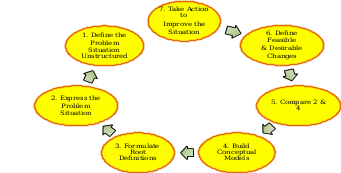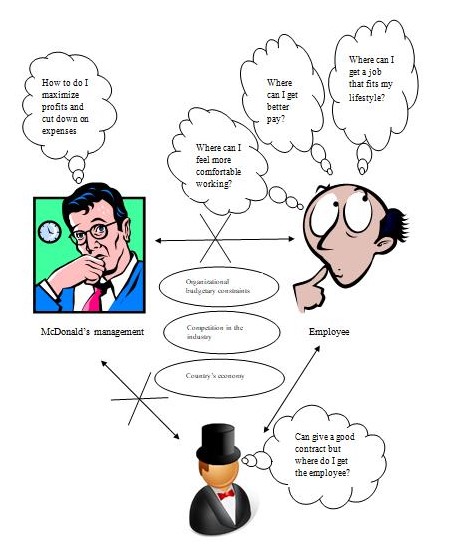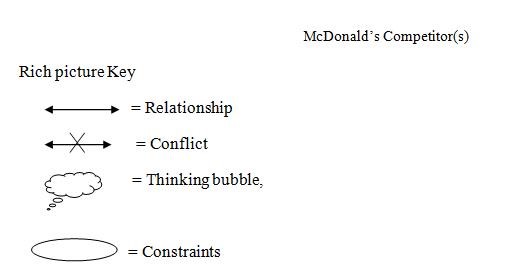Introduction
McDonald’s, headquartered in the US, is the leading global retailer of food services (McDonald’s, 2011, p.1). Currently, the company’s number of global restaurants stands at 33000. These restaurants, more than 80% of which are franchised, are distributed in 118 countries and serve an approximate 64 million people and above (McDonald’s, 2011, p.1). Worldwide, the total number of employees in the company stands at 1.7 million. The company’s Chief executive Officer (CEO) at the moment is Jim Skinner.
Even with this success, one management and business problem has been perennial for McDonald’s and this is the high rate of employee turnover in the company. The company’s annual employee turnover rate is a worrying 44% (fistful of talent, n.d., p.4). So, how can McDonald’s deal with these worrying rates of employee turnover?
Overview of employee turnover
The human resource phenomenon that is employee turnover occurs in two ways. In the first, an employee in an organization abandons his or her current position for a new position that is available to him/her in the same organization. The employee turnover, in this case, is internal as it involves only a single organization (eNotes.com, 2011, p. 5). In the second, and which is more common, an employee abandons his/her current employer to work for a different employer. The employee turnover, in this case, is external since it involves more than a single organization (eNotes.com, 2011, 5). An employee turnover can be out of the employee’s free will or it might be a necessity due to circumstance(s). Therefore, employee turnover can be voluntary or involuntary with respect to an employee (eNotes.com, 2011, p. 8). Employers are among the main causes of involuntary employee turnover (eNotes.com, 2011, p. 8). Notice that, in this document, the problem to be analyzed using Checkland’s Soft System methodology is voluntary external employee turnover.
The metric that tracks employee turnover in a given organization is the employee turnover rate (eNotes.com, 2011, 2). By default, it tracks the employee turnover for an organization on a per annum basis. An acceptable way to interpret this metric is; it tells an organization how long its employees tend or intend to stay with it. It is proper management of an organization to ensure that the employee turnover rate is as low as possible during any given period. This has proven a challenge for organizations’ human resource experts as well as industrial psychologists (Sigma Assessment Systems Inc., 2011, p. 1). The employee turnover rate for a given organization is the percentage of the number of employees making a turnover to the total number of employees in the organization (eNote.com, 2011, pp. 17 – 20).
The costs an employer incurs to employee turnover are both direct and indirect (eNotes.com, 2011, p. 3). Direct costs with respect to employee turnover are the expenses on logistical mechanisms put up for releasing and replacing the affected personnel and managing the resultant transition (eNotes.com, 2011, p. 3). The expenses include advertisement, administrative, interviewing, hiring and training costs. Indirect costs with respect to employee turnover mainly result from reduced productivity arising from the phenomenon (eNotes.com, 2011, p. 3).
Selection of a problem
This paper attempts to offer a feasible and practical solution to the question “how can McDonald’s deal with its worrying annual rate of employee turnover?” So, what exactly is the problem? The problem is the high rate of employee turnover in McDonald’s, which is associated with increased costs of operations and reduced profits. The solution to this problem is the result of Checkland’s Soft Systems analysis of employee turnover at McDonald’s. This paper will view McDonald’s as a system with a high rate of employee turnover, which it desires to bring down.
Selection of a problem-solving method
One reason why Checkland’s Soft Systems Methodology is apt for providing a solution to McDonald’s situation is that it allows for a holistic approach to the problem in question. The problem facing McDonald’s is dynamic in the sense that it involves other companies in the food services industry that are competing with it. Examples of these companies are Burger King, Yum! Brands, Darden Restaurants, Starbucks Corporation, Autogrill S.p.A.Private, Brinker International, and KFC. This dynamism requires a holistic approach to the problem so that a stable solution is found.
Another reason why Checkland’s Soft Systems Methodology is apt for providing a solution to McDonald’s situation is that it acknowledges the complexity of the problem and the uniqueness of its solution. The complexity of employee turnover is out of the fact that it is a phenomenon that is directly connected to human nature. Humans have free will and can decide what they want to do. For instance, an employee can decide to leave his/her current employer who pays better and work for another who pays relatively poorly just for the mere sake of it or because his/her heart has desired to. That is the action has no logical backing or rationality. The solution to such a problem is not a “yes or no” matter or even a quantity like “10” but should be one that appreciates the human role played in the actualization of the problem.
Reviewing Checkland’s Soft System methodology
The Systems Methodology (SSM) is an approach developed mainly by Peter Checkland for tackling problematic situations that exist in the real world (Checkland and Scholes, 1990, p.18). The fundamental difference between the SSM approach and the hard systems approach is that the former views a system as an epistemological entity whereas the latter views a system as an ontological entity (Marcia, n.d., p.8). SSM is carried out so that purposeful action can be determined which will bring about a certain desired change in an organization. The purposeful action results from a study of the organization as a system that does something. For the effective study of the organization, Checkland’s SSM requires that models of the system be constructed as they make system comprehension easier. Figure 2 below shows the seven stages of Checkland’s Soft System methodology.

The first stage in the diagram is defining the problem situation un-structurally. In this stage, information is gathered as much as possible that will give an insight or enlightenment on the organizational problem being tackled. The second stage in the diagram is expressing the problem situation. Mainly, in this stage, a graphical representation of the organizational problem being tackled known as the rich picture is constructed. The third stage in the diagram is formulating root definitions. In this stage, guided by the mnemonic CATWOE root definitions of the system being studied are formulated. In the mnemonic, C is for Customer(s), A is for Actor(s), T is for Transformation, W is for Weltanschauung, O is for Owner(s) and E is for Environmental constraints.
The fourth stage in the diagram is building conceptual models. In this stage, to better understand the problem conceptual models of the system are constructed. The conceptual models make it easy to comprehend the system. The fifth stage in the diagram is comparing the second stage and the fourth stage. The aim of this stage is to create an atmosphere of debate about the problem. This stage exposes the difference between the actual situation and the perceived reality. The sixth stage in the diagram is defining feasible and desirable changes. In this stage, the aim is to define and explore change that is compatible with the system and the culture of the organization as well. The seventh and final stage in the diagram is taking action to improve the problem situation. In this stage, the purposeful action determined by the SSM analysis is implemented.
Applying Soft Systems Methodology
In this section, we apply Checkland’s SSM to analyze the problem of employee turnover at McDonald’s.
Stage 1: Explore the problem situation
More than 80% of McDonald’s restaurants worldwide are franchised. Therefore, to analyze the problem more accurately we will explore the general causes of employee turnover and not restrict ourselves to any one restaurant of the company. The causes of employee turnover revolve around the economy of a country, the employing organization, the job, and the employee (Sigma Assessment Systems Inc., 2011, 15 – 21). The state of the economy in a country can be an incentive driving employee turnover. In economies that offer unskilled personnel with alternative jobs that are readily available and that have attractive earnings, employee turnover is high. This is because employee earnings are a major cause of persisting employee turnover (Sigma Assessment Systems Inc., 2011, 15).
Two organizational factors, namely, performance and organizational culture are also incentives that drive employee turnover. The first factor is a cause of employee turnover as it makes an employee believe that it is more logical to work for a performing organization than for a non-performing one. The logic is that a performing organization guarantees job security to an individual if in comparison to nonperforming ones. The organizational culture in place in an organization tells an employee his or her worth in the organization. An employee will migrate from an organization that shows him or her little or no appreciation to one that readily recognizes his or her efforts. Similarly, an employee will migrate from an organization that is less sensitive to one that is more sensitive to him or her.
Job characteristics are another cause of employee turnover. The characteristics of a job can be an incentive driving employee turnover. For instance, the characteristics of one job can make it more attractive if in comparison to another and therefore, compelling an employee to change jobs. This is also the case when one kind of job is characteristically more important or more arduous or more dangerous or posters a sense of accomplishment when compared to another. Employees’ unrealistic expectations out of their jobs are another cause of employee turnover (Sigma Assessment Systems Inc., 2011, 17). When an employee is applying for a job, he or she has many uninformed expectations out of it, thus when things turn out differently the employee is disillusioned and opts to quit.
Personal factors such as the need for higher learning or family-related issues also compel an employee to make a turnover (Sigma Assessment Systems Inc., 2011, 18). An employee’s demographic and biographical traits, which dictate his or her lifestyle, are also another cause of employee turnover (Sigma Assessment Systems Inc., 2011, 16). An employee will make an employee turnover to end up in an environment that accommodates his or her lifestyle. For instance, if the employee is a smoker and in the current organization, he or she is unable to smoke; this easily becomes an incentive that drives the employee to make an employee turnover into an organization or environment that allows him or her to smoke without difficulty.
Stage 2: Express the problem situation (Physical Context)
Below is the rich picture describing the problem situation:


The rich picture above captures the situation that is voluntary external employee turnover. From the rich picture, it can be seen there is a conflict between McDonald’s manager and employee. The conflict can be described as “the interest of the manager is mainly how the organization can maximize its profits and cut down on operation costs, however, due to circumstance or not the employee wants to make a turnover, which will eventually result in more operational costs to the McDonald’s.
Again, from the rich picture, it can be seen that a conflict exists between McDonald’s and their competitor (s). The conflict can be described as “McDonald’s wishes to cut down on operational costs by dealing with employee turnover in the organization, on the other hand, there is the employer’s competitor who is willing to give a generous contract to the employee, this contact is an incentive that triggers employee turnover. The turnover results in more operational costs for McDonald’s, a generous contract for the employee, and more profits for the employer’s competitor. From the rich picture, there is no conflict between the employer’s competitor and the employee. This is because the turnover will present both of them with mutual benefits.
Finally, the rich picture shows that the environment in which the actors are in is characterized by organizational budgetary constraints and souring competition between organizations.
Stage 3: Formulation Root Definition
In this stage, guided by the mnemonic CATWOE, formulation of the root definition is done.
The CATWOE Mnemonic
Stage 4: Conceptual Model
To comprehend our problem better and bring about the desired transformation we develop a conceptual model. The desired transformation is to move from a McDonald’s with a high employee turnover rate to one with a low employee turnover rate. The transformation is achieved through a set of activities. The activities are:
- Studying McDonald’s policy on franchising
- Interviewing McDonald’s CEO
- Interviewing McDonald’s Chief Human Resources Officer
- Take a random and manageable sample of McDonald’s restraints and study their management
- From the sample, interview the employees
- Researching on combating and preventing employee turnover
- Undertaking of an advocacy test
Studying McDonald’s policy on franchising is important as it reveals the kind of people who own the company’s restaurants and the procedure followed. By studying this policy, it can be discovered that its alteration is a means towards reducing the company’s turnover rate. For instance, it may encourage a certain management style by recommending certain people to own the company’s restaurants. An interview with McDonald’s CEO is important as more insight can be shed on what the company is doing to address the problem. Interviewing McDonald’s Chief Human Resources Officer is important also, as it sheds more insight on which combative and preventive strategies are effective with the company. Since it is arduous and costly to survey all of McDonald’s restaurants, it is better to choose a random sample of a certain size. Doing an interview manager of restaurants in the chosen sample to know about their management styles. Additionally, interviews with employees to know the causes of their dissatisfaction with their employers and jobs. Researching on combating and preventing employee turnover is important as more enlightenment is gained on how to solve the problem. With the results of the interviews and having researched on combating and preventing employee turnover the next step is to try out some of the strategies to see how well their work with the company. Activities I, II, and III have no predefined order, which they should follow. Activity IV should follow either I, II or III. Activity V should follow activity IV and so on. This is shown in figure 4 below

Stage 5: Compare stage 2 and stage 4
Stage 6: Defining desired change
The following is the desired change:
Better communication between McDonald’s management and employees: employees will be able to raise up issues of concern to them no matter how minor with the management of McDonald’s. this way McDonald’s will be more aware of the issues facing its employees.
A stronger allegiance to the company: better communication in the company on issues small or big will give employees more confidence in the company’s management. The confidence will strengthen the bond between the two and therefore employees will have a stronger allegiance to the company.
Stage 7: Taking action to improve the situation
McDonald’s CEO and McDonald’s restaurant owners are responsible for ensuring the combative and preventive strategies are implemented. The strategies should be implemented within a small to long-term project. The strategies include:
Improving the company’s internal code of ethics: Ethics, according to the Macmillan English Dictionary, are the principles by which you decide what is right and wrong (2002, p.470). It is the case that a decision-making process founded on ethics promises good decision making which is important in building a company. It is therefore imperative for an ethical person or organization to match its standards with a proper ethical decision-making model.
Instilling a critical thinking culture: Critical thinking skills are aimed at helping an individual or organization act purely objectively and rationally. The ability to make the right decisions is important in securing a better future for McDonald’s. Critical thinking is vital in good decision-making.
Improving the recruitment policy: The high employee turnover rate indicates that McDonald’s is hiring the wrong people to work for it. Hiring the right people in an organization is a critical step in preventing and combating employee turnover
Conclusion
In this paper, Checkland’s Soft System methodology has been used to analyze McDonald’s managerial and business problem of employee turnover. McDonald’s should adopt the purposeful action suggested by this paper as a starting point in addressing its high employee turnover rate.
References
- Checkland, P. & Scholes, J. (1990). Soft systems methodology in action. Chichester, GB: John Wiley & Sons.
- eNotes.com. (2011). Turnover (employment).
- Fistful of talent. (2008). Can this turnover number from Mcdonalds (44%) be right?.
- Macmillan Education (2002). Macmillan english dictionary. MacmillanPubishers. Oxford.
- Marcia, S. (n.d.). Beyond Checkland & Scholes: improving SSM.
- McDonald’s. (2011). Getting to know us…
- Sigma Assessment Systems Inc. (2011). Overview of employee turnover research.